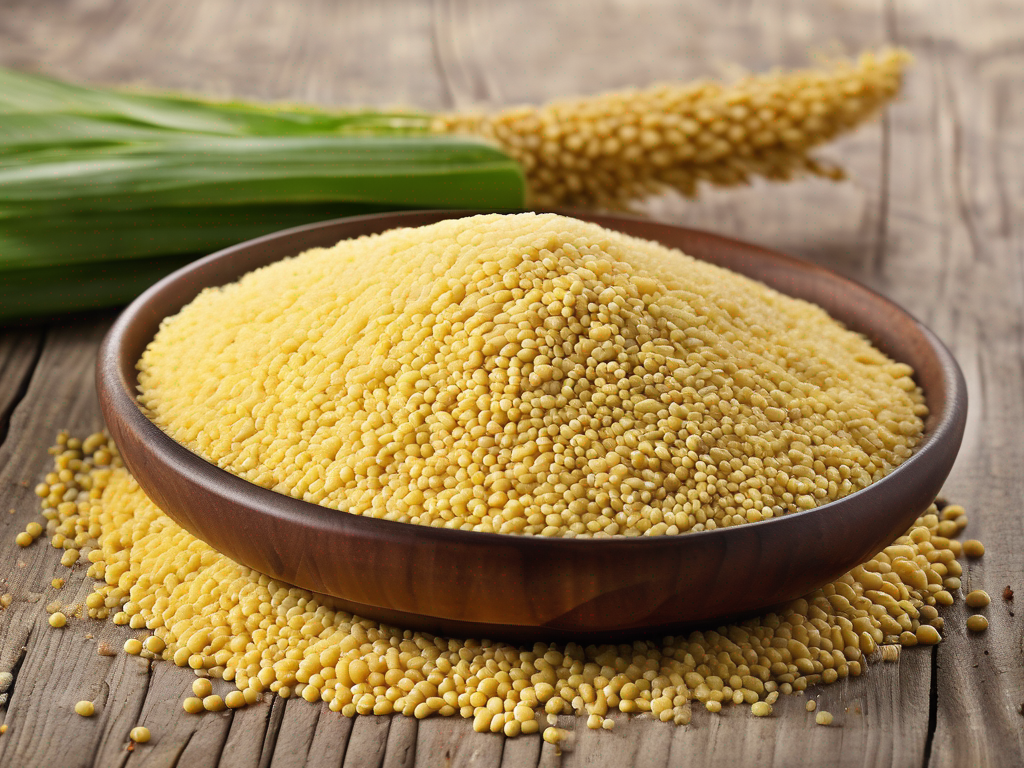
How to Store Millet for Optimal Freshness
Get Your Free Food Safety Cheat Sheet
30 most common foods with instant answers. Print it and stick it on your fridge—completely free!
How to Store Millet for Optimal Freshness
Millet is a versatile and nutritious grain that has been consumed for thousands of years. It is rich in essential nutrients like protein, fiber, and antioxidants, making it a popular choice for a healthy diet. Proper storage of millet is crucial to maintain its freshness, taste, and nutritional value. In this blog post, we will discuss the best way to store millet to ensure optimal freshness and quality. (Millet)
Why Proper Storage is Important for Millet
Proper storage of millet is essential to prevent it from spoiling and losing its nutritional value. Here are some reasons why proper storage is important for millet:
Retaining Nutritional Value
Millet contains essential nutrients like protein, fiber, vitamins, and minerals. Proper storage helps preserve these nutrients, ensuring that you get the maximum health benefits from consuming millet.
Preventing Spoilage
Improper storage can lead to moisture buildup, which can cause millet to spoil, become moldy, or attract pests. Storing millet in the right conditions can help prevent spoilage and maintain its quality.
Maintaining Freshness and Taste
Storing millet properly helps retain its freshness and nutty flavor. Fresh millet enhances the taste of your dishes and ensures a pleasant eating experience.
Best Practices for Storing Millet
To ensure that your millet stays fresh and retains its nutritional value, follow these best practices for storing millet:
1. Choose the Right Container
- Use an airtight container to store millet. A glass or plastic container with a tight-fitting lid works well to protect millet from moisture and pests.
- Make sure the container is clean and dry before storing millet to prevent contamination.
2. Store in a Cool, Dry Place
- Keep millet in a cool, dry place away from direct sunlight and heat sources. Excessive heat and light can cause millet to spoil quickly.
- Avoid storing millet near sources of moisture, such as the sink or stove, as moisture can cause mold growth.
3. Use Proper Sealing Techniques
- Seal the container tightly to prevent air and moisture from entering. Oxygen and moisture can lead to rancidity and spoilage of millet.
- Consider using vacuum-sealed bags or containers for long-term storage to extend the shelf life of millet.
4. Label and Date the Container
- To keep track of the freshness of millet, label the container with the date of purchase or storage. This helps you use older millet first and ensures you always have fresh millet on hand.
- Include any relevant information like the type of millet or its origin on the label for easy identification.
5. Rotate Stock Regularly
- Check your millet supply regularly and use older millet first. This practice, known as FIFO (first in, first out), helps prevent the millet from sitting for too long and ensures you consume the freshest millet available.
Safety Tips for Storing Millet
When storing millet, it is essential to follow these safety tips to prevent contamination and ensure food safety:
Keep Away from Chemicals
- Store millet away from chemicals, cleaning products, or other substances that may contaminate the grain. Chemical contamination can affect the quality and safety of millet.
Check for Pests
- Inspect millet for signs of pests like insects or rodents before storing. If you notice any infestation, discard the contaminated millet and clean the storage area thoroughly.
Wash Hands Before Handling
- Before handling millet for storage or cooking, wash your hands thoroughly with soap and water to prevent any contamination from your hands.
Store Away from Strong Odors
- Avoid storing millet near strong-smelling foods or items. Millet can absorb odors from its surroundings, affecting its taste and overall quality.
Conclusion
Proper storage of millet is essential to maintain its freshness, taste, and nutritional value. By following the best practices outlined in this blog post and adhering to safety tips, you can ensure that your millet stays fresh and safe for consumption. Remember to choose the right container, store millet in a cool, dry place, use proper sealing techniques, label and date the container, and rotate stock regularly to enjoy the benefits of fresh millet in your meals. With these storage tips in mind, you can make the most of this nutritious and versatile grain in your diet.
For more information on millet and other healthy grains, visit our millet page.
Remember, fresh millet leads to delicious meals and a healthier you! (Millet)
Authoritative Food Safety References
These agencies and university labs inform every tip and health precaution we publish.
USDA FoodKeeper – Cold Storage Guidelines
Official refrigerator, freezer, and pantry timelines maintained by the U.S. Department of Agriculture.
Visit USDA FoodKeeperFDA Produce Safety Rule & Grower Guidance
Field-to-fridge handling practices that prevent contamination of fruits, vegetables, and leafy greens.
Visit FDA Produce SafetyCDC Foodborne Illness Prevention Hub
Surveillance-backed guidance on pathogens, symptoms, and steps to reduce foodborne illness risk.
Visit CDC Food SafetyUC Davis Postharvest Technology Center
University research detailing optimal storage atmospheres for produce after harvest.
Visit UC Davis PostharvestPenn State Extension – Home Food Preservation & Safety
Peer-reviewed extension bulletins on safe canning, chilling, and reheating practices.
Visit Penn State ExtensionGet Your Free Food Safety Cheat Sheet
30 most common foods with instant answers. Print it and stick it on your fridge—completely free! Want more? Upgrade to the complete guide with 70+ foods.
Scan your food directly and get instant safety info using our AI-powered camera feature.